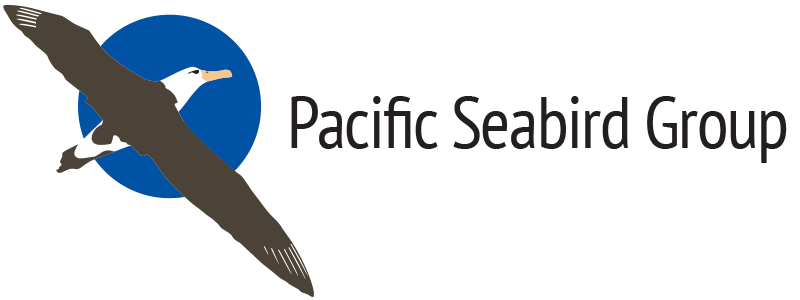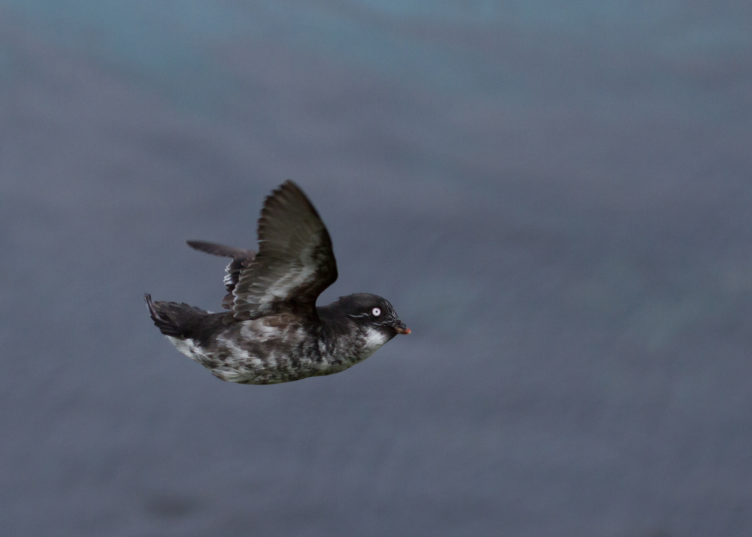Davoren et al. (2024)
Author Information
Gail Davoren, Emily Runnells, Matthew Legard, Kristina McOmber, Megan Dalton, Katrina Wilcox, and Carolyn Currie: University of Manitoba, Department of Biological Sciences
Overview of research on alcids on the Newfoundland and Labrador Shelf
The Davoren Lab continued their decadal-scale research on seabirds and their prey on the east coast of Newfoundland. Recent work has focused on alcids breeding on James Island. Between 10–15 GLS loggers have been deployed on Atlantic Puffins (Fratercula arctica) and Razorbills (Alca torda) each year starting in 2019, with 20 and 28 tags per species recovered to date, respectively. Tagged Razorbills traveled all the way from the Labrador Sea down to Cape Hatteras in some years, while a diversity of movement paths was evident among the puffins, including some that gathered in the Gulf of Maine (see Figure). In 2021–2022, 30 combination GLS and TDR loggers were deployed on Razorbills, with 11 tags retrieved to date. These GLS and GLS-TDR datasets, combined with stable isotope analysis on multiple tissues (feather, eggshell membrane, blood), will be used by students to study isotopic niche overlap among species and carry-over effects, along with time-activity budgets during key under-studied parts of the annual cycle (e.g., moult, pre-laying) and the effects of personality on foraging behavior, non-breeding distribution and reproductive success. Stable isotope analysis of Atlantic Puffin flight feathers is also being used to determine the pattern of moult. During 2023, GPS-TDR loggers were simultaneously attached to chick-rearing Atlantic Puffins (n=6) and Razorbills (n=20) for short-term (1–5 day) deployments. These tracking data will be combined with long-term monitoring of spawning capelin biomass to assess whether inter-annual variation in prey biomass differentially influences the foraging effort and breeding success of these two species. As Atlantic Puffins provision chicks with a high proportion of sand lance, these tracking data will also be used to inform ongoing ship-based research on sand lance density and distributional patterns in coastal Newfoundland. Also during 2023, acoustic recordings of both common murres and razorbills were collected at sea and at colonies, respectively, to investigate alcid vocal communication and inform passive acoustic monitoring methods.
Figure: 50% Kernel density estimates during successive two-month periods of the non-breeding season for Atlantic puffins (ATPU), razorbills (RAZO), and common murres (Uria aalge; COMU) from James Island, Newfoundland, Canada, tracked with light-level geolocators. In August–September, there was some overlap of these core use areas among all three species in the waters off eastern Newfoundland (A), but this overlap generally decreased throughout the non-breeding season. Figure is reproduced from data in Runnells et al., in revision in Marine Ecology Progress Series.







